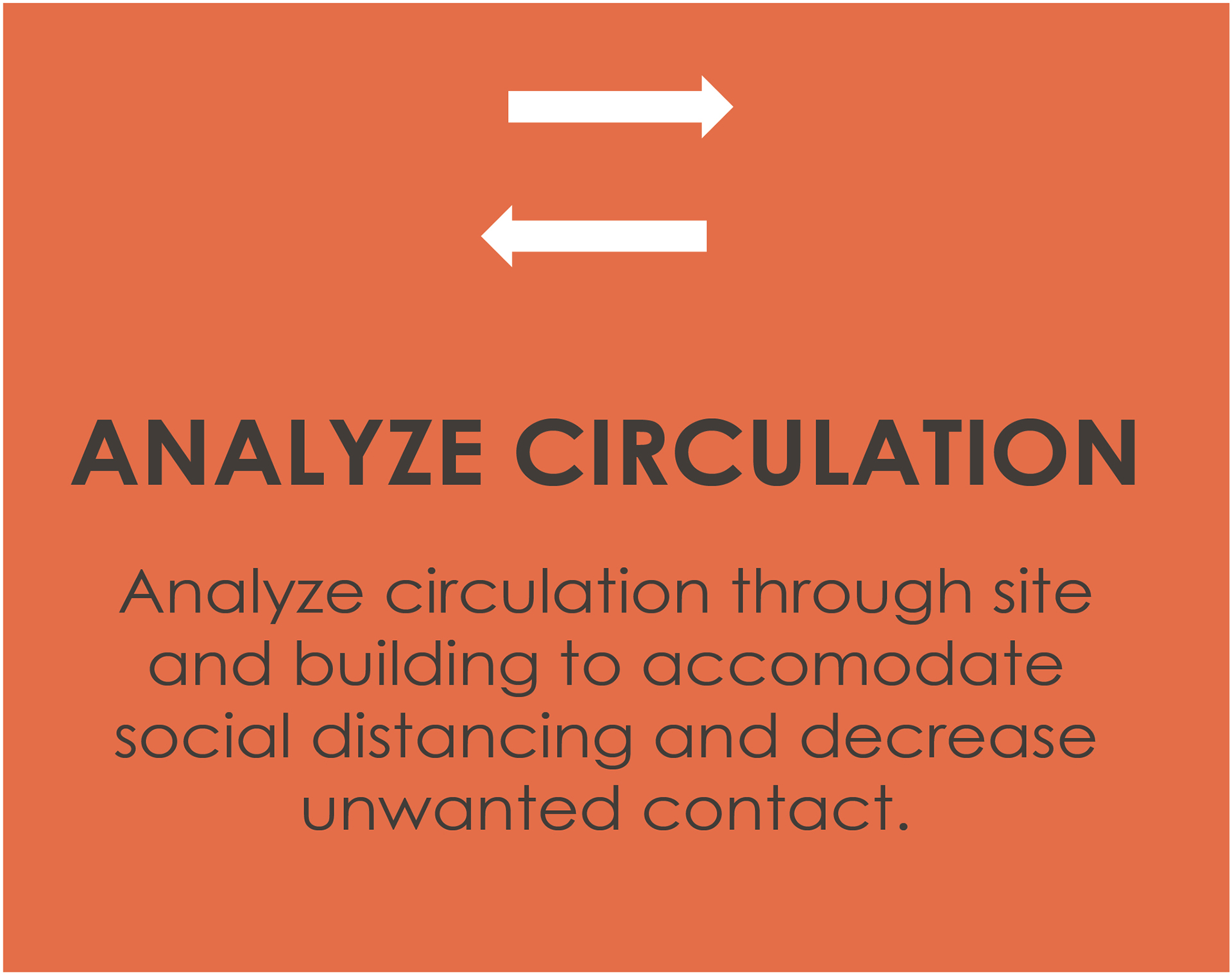
Analyze circulation through site and building to accommodate social distancing and decrease unwanted contact.
- Consider the need for outdoor queuing areas and provide accommodations, such as overhead covering, accessible access points, etc.
- Organize and design car and bus drop-off and pick-up to accommodate social distancing.
- Design wide corridors to allow for multi-directional traffic while maintaining social distancing, where possible.
- Where corridors are too narrow to allow people to pass while maintaining social distancing, designate one-way corridors.
- In buildings with multiple stair towers, designate each as either “up” or “down” in non-emergency use to eliminate cross-traffic.
- Examine space adjacency and operational flow to limit undesirable contact between building occupants, including between staff, patients/residents, public, deliveries, etc.

